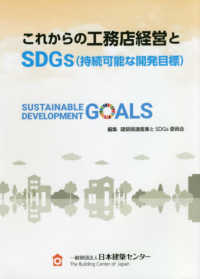- ホーム
- > 洋書
- > 英文書
- > Science / Mathematics
Full Description
Dr. Jacobsson's book deals with microelectronics-based innovation in machine tools: with the production and use of computer numerically controlled machine tools in the world economy and especially in the Third World.






